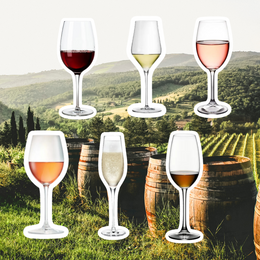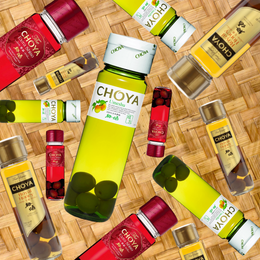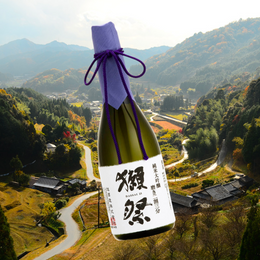
Watch any one of the Korean dramas that seems to be blowing up on Netflix at any given point of time and you’ll be bound to notice at least one scene with a green-tinted bottle of liquor artfully placed beside a celebrity. Thanks in part to the budgetary firepower of soju companies’ marketing departments, it’s easy to guess from just one glance at that green bottle that the liquid inside is soju.
You may have wondered how the green bottle became so synonymous with the soju category. While South Korea is home to dozens of different soju brands – including the likes of HiteJinro’s Chamisul and Lotte’s Chum Churum – somehow many of the major brands still seem to bottle their product in the exact same 360ml green bottle of similar size and proportions.
From a branding perspective, it seems bizarre that each producer would commit to using the same bottling as a competitor (*insert foreshadowing*). Yet, there’s actually an interesting backstory behind how the practice of using green bottles came to be…
The Origin of the First Green Bottled Soju

While the origins of soju can be dated back all the way to the 13th century, the practice of bottling soju in green bottles is actually still a relatively new phenomenon. In the past, soju makers were free to bottle their soju in whatever bottle they wanted – resulting in bottles that ranged from white to brown to blue.
In 1994, however, in a game-changing act of marketing, Doosan Beverage (which was later acquired by Lotte Chilsung) started to sell the very first green bottled soju. The brand opted for green because of the colour’s association with health and vitality. Some savvy marketers at Doosan felt that this characteristic of green would best convey their soju’s clean and neutral taste to consumers.
The debut of this uniquely coloured green bottled soju was a huge success – and pretty soon, other competitors brands started releasing their own versions of soju in green bottles.
The “Green Bottle” Pact

As more soju brands began bottling their soju in green tinted bottles, they realised that there could be other cost-saving benefits to be harnessed from this. The producers thought that if they were to standardise the green bottles they were using, any one soju bottle could be recycled and reused across the various producers.
A voluntary agreement was made between many of the major soju producers and the Korean Ministry of Environment. Brands would all produce their soju in the same green bottles, and these bottles could be brought to any of the brand’s recycling centres or breweries to be reused. Having standardised bottles saved tons of time and money when it came to sorting.
This eco-friendly initiative was so successful that by 2018, government statistics showed that around 97% of soju bottles in South Korea was regularly recycled.
Trouble In Paradise: The Launch of “Jinro Is Back”!
All was well and good with the green bottle pact. Until it wasn’t.
In April of 2019, soju giant Hite Jinro decided to launch a new soju brand called “Jinro is Back”, which was inspired by older soju brands during earlier times. This wouldn’t have caused such controversy if not for the fact that the new brand was sold in a cool blue bottle, with a rounder, plumper shape – departing from the standardised green bottles that other producers and consumers alike had gotten used to.

Unsurprisingly, this unconventional bottle shape fascinated consumers… and pissed off other producers.
Jinro is Back did really well at launch, selling over 100 million bottles within a few short months, as consumers rushed to grab this blue bottle and try it for themselves. It did so well, in fact, that Hite Jinro’s competitor Lotte Chilsung Beverage was starting to accumulate thousands and thousands of these blue bottles at their own recycling hubs and breweries. Lotte was disgruntled, complaining that they now faced additional costs to sort out Hite Jinro’s blue bottles from the standardised green bottles.

Jinro is Back bottles collected at a Lotte Chilsung Beverage brewery in North Chungcheong Province. (Image source: Rep. Sul Hoon)
This sparked off a months-long dispute between the two soju giants. Lotte demanded that Hite Jinro picked up their blue bottles and reimbursed them for the added trouble of sorting out the Jinro is Back bottle. Yet, Hite was adamant, and refused to pay. The ensuing debate winded up involving various other entities, including other soju makers whom were split on the issue, as the Ministry of Environment, who claimed that their hands were tied given that the original agreement was a voluntary one and not enshrined in the law.
Eventually, the country’s soju makers ceased the initial pact and drew up a new agreement. Under the new agreement, the green bottle was still considered the standard one. However, soju makers that made a non-standard bottle could trade a competing brand one standard bottle for each non-standard bottle the latter collected. If for some reason, a bottle was deemed non-tradable, that company would have to pay a fee to have them exchanged at the Korea Resource Circulation Service Agency.
Will the Green Soju Bottles Start to Fade?
For now, the green bottled soju still remains the industry standard for the most part, and accounts for the vast majority of soju sold in South Korea and globally. Yet, with Lotte setting a new precedent in 2019, it’s safe to expect that more non-standard soju bottles are likely to appear in the next few years.
Some commentators have expressed concern about the environmental impact that may arise from the proliferation of non-standardised bottles, and made calls for the South Korean government to introduce tighter guidelines about the bottle specification. Meanwhile, others cite the fact that few other alcohol categories globally are subject to such homogenous restrictions around the colour of their bottles, and question why soju makers alone are expected to yield to such constraints. After all, in such a crowded soju market, it makes sense that soju makers will seize any opportunity to better differentiate their brand through packaging.
Only time will tell how the industry conventions around the bottles may evolve. In the meantime, go forth and enjoy your soju, in green bottles or otherwise. Just remember to recycle your glass bottles regardless.
For a beginners guide to soju, click here.

@lotusroot518





